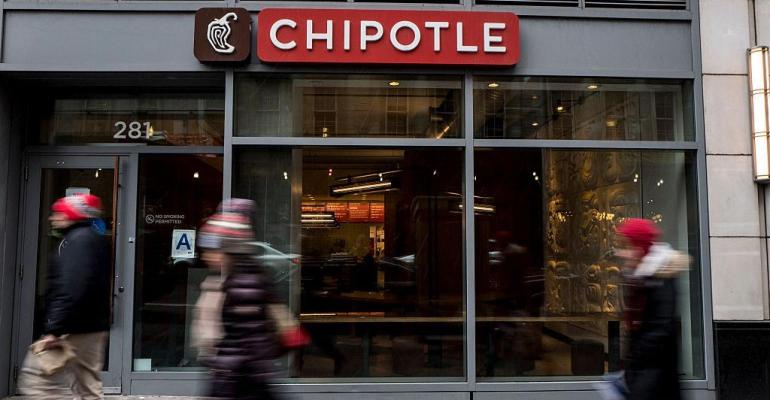Any way you slice it, traffic numbers industrywide are … not great right now. Consider data from Guest XM by Black Box Intelligence, for instance, showing that comp traffic in September was down 3.3% – the weakest month in over a year and continuing a negative trend that began in July. In August, traffic was down by about 2%.
Placer.ai echoes this trend, reporting negative 4.2% traffic industrywide in September, and negative 2.4% traffic in August. July was also down a nominal 0.8%, rounding out a challenged third quarter overall. Further, a recent Revenue Management Solutions survey finds that nearly half of all respondents cut back on restaurant visits in Q3, a year-over-year jump of nearly 20%.
What’s driving restaurant customers away (seemingly) all of a sudden? More than two in three RMS respondents made that very clear – higher prices. Though menu prices have begun to cool compared to last year, inflation weariness seems to have taken a firm hold.
That said, customers at Chipotle and Texas Roadhouse are anything but fatigued. Both companies reported third quarter earnings this week. Both companies raised prices during the quarter, and for Chipotle, the fourth increase in two years.
Both companies experienced remarkable traffic gains – over 4%.
This is important because traffic is a critical metric when it comes to the overall health of the business. It illustrates demand in a saturated industry, and, in these cases, it proves customers are willing to (continue) paying higher prices at these two concepts and more so than most others in the industry.
Executives at both brands still acknowledged a challenged consumer set and, indeed, those challenges have been relentlessly persistent for over a year now. Inflation, debt, student loans, higher interest rates, name it, those pressures are beginning to impact restaurant consumers. A Bank of America survey found that a whopping 73% Gen Z consumers (heavy restaurant users) are finding ways to cut back on spending.
The last time a confluence of so many pressures impacted consumers was during the Great Recession of 2008-2009 and most brands chased deals, discounts, and dollar menus to maintain traffic. We’re still seeing some of those tactics, by the way, and in fact there’s been a bit of an uptick in recent months to combat broader traffic declines.
Not at Chipotle or Texas Roadhouse, however. Those chains have never been deal-heavy. They don’t have value menus. Texas Roadhouse rarely, if ever, has LTOs to sway new customers in the door. Their consumers are finding value from other attributes.
What are those attributes? At Chipotle, it’s mostly convenience. Nearly 40% of sales at the chain come from digital channels, a number that has stabilized since the throes of the pandemic. More than 80% of new restaurants include a Chipotlane to enable customers to order ahead via their mobile device. A more efficient digital makeline with beefed up staffing is focused explicitly on those digital orders. All of these efforts save customers time and, as the saying goes, time is money. Time saved, then? Value.
There’s also the healthy halo perception Chipotle exudes. Its “food with integrity” mantra and locally sourced ingredients no doubt make at least some consumers feel better about indulging, even if that indulgence includes tortilla chips. Healthy perception leads to less guilt. Less guilt is always valuable.
What’s especially remarkable about Chipotle’s traffic/pricing equation is that transactions are up across all income levels. A survey completed last year by BTIG found that Chipotle was nearly 10% cheaper than its national category peers, Qdoba and Moe’s Southwest Grill, meaning it had pricing to take without compromising its value proposition and therefore attracting consumers across demographics.
Texas Roadhouse has a significantly different business model and a significantly different value proposition attracting guests into its restaurants year in and year out. In the current environment, that comes down to consistent execution against its “legendary service” mission. Staffing levels are back where they were pre-pandemic, which has supported this mission.
“We recently completed an independent guest attitude and usage study, and we were the casual dining leader in many categories, including overall guest satisfaction, food quality, and friendly service,” CEO Jerry Morgan said during the earnings call.
Friendly service is always a value proposition. So is experience; executives have previously discussed how customers get an abundance of food with their orders, including rolls served with signature honey cinnamon butter (Texas Roadhouse has a beekeeper on site at its Louisville, Ky., headquarters), and its free shelled peanuts. Further, we American consumers tend to seek out comfort food during stressful times and Texas Roadhouse’s steaks are just that. Comfort equals value.
Will this multifaceted definition of value – convenience, health halo, service, comfort – stick? Time will tell. What we know now is that both chains reported that their strong traffic patterns have continued so far into Q4.
Contact Alicia Kelso at [email protected]





